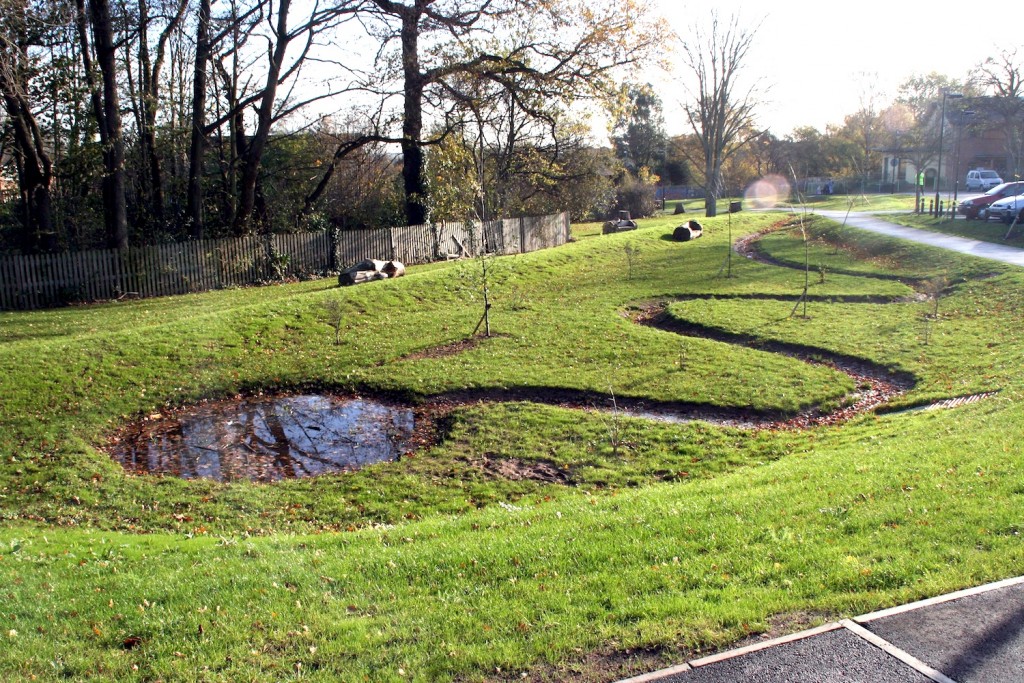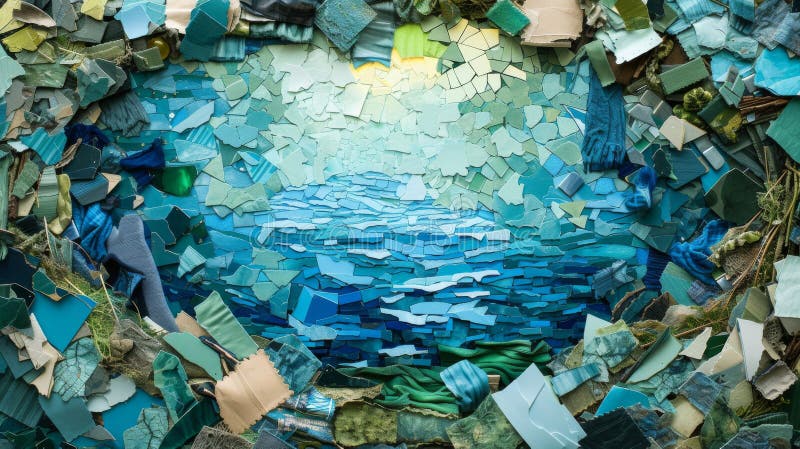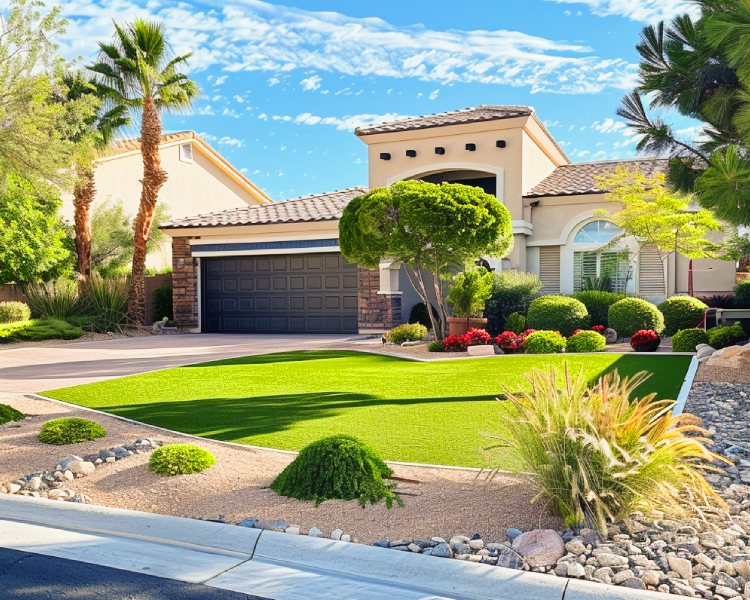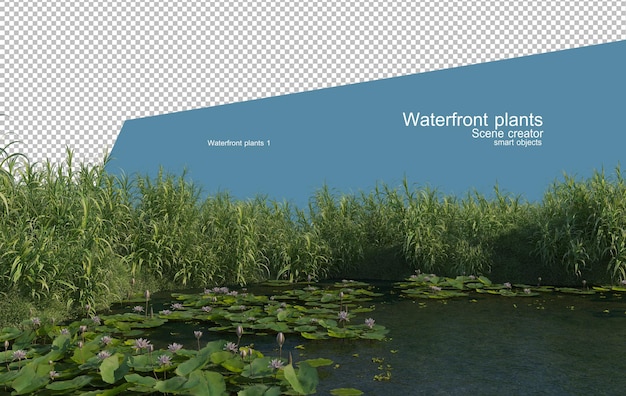
Sustainable Landscape Drainage Solutions: Protecting Your Property and the Planet
In an era defined by increasing environmental awareness and the urgent need for sustainable practices, the way we manage our landscapes is undergoing a significant transformation. One critical aspect of this shift is the adoption of sustainable landscape drainage solutions. These innovative approaches not only protect our properties from the damaging effects of excess water but also contribute to the health of our ecosystems. This comprehensive guide delves into the world of sustainable landscape drainage, exploring the challenges, the solutions, and the benefits of embracing a greener approach to water management.
Understanding the Importance of Landscape Drainage
Before diving into sustainable solutions, it’s crucial to understand why proper landscape drainage is so important. Effective drainage is more than just preventing puddles in your yard; it’s about safeguarding your property’s structural integrity, protecting your landscaping investments, and preserving the environment.
The Risks of Poor Drainage
Poor drainage can lead to a cascade of problems. Standing water can saturate the soil, leading to:
- Foundation Damage: Water seeping into the foundation of your home can cause cracks, leaks, and costly repairs.
- Erosion: Excess water can erode soil, undermining walkways, driveways, and other structures.
- Plant Damage: Over-saturated soil deprives plant roots of oxygen, leading to root rot and plant death.
- Pest Infestation: Standing water provides breeding grounds for mosquitoes and other pests.
- Health Hazards: Mold and mildew growth in damp areas can pose health risks.
The Environmental Impact of Traditional Drainage
Traditional drainage methods, such as concrete pipes and storm sewers, often exacerbate environmental problems. They can:
- Contribute to Flooding: Rapid runoff from impervious surfaces (like roofs and driveways) overwhelms storm sewers, increasing the risk of flooding downstream.
- Pollute Waterways: Stormwater runoff carries pollutants like fertilizers, pesticides, and oil into rivers and streams, harming aquatic life.
- Deplete Groundwater: Traditional drainage systems often divert water away from the landscape, preventing it from replenishing groundwater supplies.
Embracing Sustainable Landscape Drainage Solutions
Sustainable landscape drainage solutions aim to manage stormwater in a way that mimics natural processes. This means slowing down runoff, allowing water to infiltrate the soil, and filtering pollutants. These methods offer a range of benefits, including:
- Reduced Flooding: By slowing down runoff, these solutions reduce the burden on storm sewers and decrease the risk of flooding.
- Improved Water Quality: Filtering pollutants before they reach waterways helps to protect aquatic ecosystems.
- Groundwater Recharge: Allowing water to infiltrate the soil replenishes groundwater supplies, which are essential for drinking water and irrigation.
- Enhanced Aesthetics: Many sustainable drainage solutions, such as rain gardens and bioswales, are visually appealing and can enhance the beauty of your landscape.
- Increased Property Value: Sustainable landscaping can increase the value of your property.
Key Sustainable Drainage Techniques
Several innovative techniques are employed in sustainable landscape drainage. Each method has its strengths and is suited for different situations. Let’s explore some of the most effective solutions:
1. Rain Gardens
Rain gardens are strategically designed depressions in the landscape that capture and filter stormwater runoff. They are typically planted with native plants that are adapted to both wet and dry conditions. Rain gardens work by:
- Collecting Runoff: Rain gardens are positioned to receive runoff from roofs, driveways, and other impervious surfaces.
- Filtering Pollutants: The plants and soil in the rain garden filter pollutants from the water before it infiltrates the ground.
- Promoting Infiltration: The porous soil in a rain garden allows water to slowly infiltrate the ground, replenishing groundwater supplies.
- Providing Habitat: Rain gardens provide habitat for beneficial insects, birds, and other wildlife.
Rain gardens are a versatile and aesthetically pleasing solution that can be adapted to various landscape settings.
2. Bioswales
Bioswales are vegetated channels designed to convey and filter stormwater runoff. They are similar to rain gardens but are typically longer and more linear. Bioswales work by:
- Channeling Runoff: Bioswales are designed to guide runoff from impervious surfaces to a designated discharge point, such as a rain garden or a natural drainage area.
- Slowing Down Runoff: The vegetation and the gently sloping sides of the bioswale slow down the flow of water, allowing it to filter through the soil.
- Filtering Pollutants: The plants and soil in the bioswale filter pollutants from the water.
- Enhancing Aesthetics: Bioswales can be incorporated into the landscape design to create attractive and functional features.
Bioswales are an effective solution for managing runoff from large areas, such as parking lots and roadways.
3. Permeable Paving
Permeable paving materials, such as porous concrete, permeable pavers, and gravel, allow water to infiltrate the ground rather than running off. These materials are ideal for driveways, walkways, and patios. Permeable paving works by:
- Allowing Water Infiltration: The porous surface allows water to pass through to a gravel base below.
- Storing Water: The gravel base acts as a reservoir, storing water and allowing it to slowly infiltrate the surrounding soil.
- Reducing Runoff: By allowing water to infiltrate, permeable paving significantly reduces runoff and the risk of flooding.
- Filtering Pollutants: As water percolates through the gravel base, it is filtered, removing pollutants.
Permeable paving is a practical and aesthetically pleasing solution for managing runoff from hard surfaces.
4. Green Roofs
Green roofs, also known as living roofs, are vegetated roofs that absorb rainwater and provide insulation. They are an excellent option for buildings with flat or gently sloping roofs. Green roofs work by:
- Absorbing Rainwater: The plants and soil on a green roof absorb rainwater, reducing runoff.
- Filtering Pollutants: The vegetation filters pollutants from the rainwater.
- Providing Insulation: Green roofs provide insulation, reducing energy costs for heating and cooling.
- Enhancing Aesthetics: Green roofs add a natural element to the building and can create a beautiful and inviting space.
Green roofs are a sustainable and attractive solution for managing stormwater and improving building performance.
5. Rain Barrels and Cisterns
Rain barrels and cisterns collect rainwater from rooftops for later use. This reduces the demand on municipal water supplies and provides a sustainable source of water for irrigation and other non-potable uses. Rain barrels and cisterns work by:
- Collecting Rainwater: Rain barrels and cisterns are connected to downspouts to collect rainwater from the roof.
- Storing Water: The collected water is stored for later use.
- Reducing Water Consumption: The stored water can be used for irrigation, washing cars, and other non-potable uses, reducing the demand on municipal water supplies.
- Conserving Water: Rainwater harvesting helps to conserve water resources.
Rain barrels and cisterns are a simple and effective way to conserve water and reduce your environmental impact.
6. Subsurface Drainage Systems
These systems involve the use of perforated pipes buried underground to collect and redirect excess water. While not inherently ‘green’ unless implemented thoughtfully, they can be integrated into a sustainable drainage plan. They can be used in conjunction with other methods to manage water effectively and prevent waterlogging. Key considerations for sustainable use include:
- Choosing Appropriate Materials: Opt for durable, non-toxic materials.
- Proper Installation: Ensure correct grading and placement to facilitate efficient water flow.
- Integration with Other Methods: Combine subsurface drainage with rain gardens or bioswales for optimal results.
Designing a Sustainable Landscape Drainage System
Designing a sustainable landscape drainage system requires careful planning and consideration of several factors. It’s often best to consult with a landscape architect or a drainage specialist to ensure the system is effective and tailored to your property’s specific needs. Here are some key steps in the design process:
1. Assess Your Site
A thorough site assessment is the first step. This involves:
- Evaluating Soil Type: Determine the soil’s drainage capacity. Sandy soils drain quickly, while clay soils drain slowly. This will influence the choice of drainage methods.
- Identifying Drainage Patterns: Observe how water flows across your property during rainfall. Identify areas where water tends to pool or erode the soil.
- Assessing Impervious Surfaces: Determine the amount of impervious surfaces on your property, such as roofs, driveways, and patios.
- Considering Climate and Rainfall: Understand the typical rainfall patterns in your area to design a system that can handle the volume of water.
2. Choose the Right Solutions
Based on your site assessment, select the most appropriate sustainable drainage solutions. Consider a combination of methods to create a comprehensive and effective system. For example, you might use a rain garden to manage runoff from your roof and permeable pavers for your driveway.
3. Plan for Water Flow
Design the system to direct water away from your home and other structures. Ensure that water flows to the chosen drainage features, such as rain gardens or bioswales. Proper grading and the strategic placement of drainage features are essential.
4. Select Appropriate Plants
If incorporating rain gardens or bioswales, choose native plants that are adapted to the local climate and soil conditions. These plants will thrive in the wet conditions and help to filter pollutants. Consider the plants’ aesthetic value as well.
5. Install and Maintain the System
Proper installation is crucial for the success of any drainage system. Hire qualified professionals to install the system, especially for complex projects. Once installed, maintain the system by regularly cleaning and inspecting it. Remove debris from rain gardens and bioswales, and trim vegetation as needed.
Benefits of Sustainable Landscape Drainage
The adoption of sustainable landscape drainage solutions offers a multitude of benefits, both for individual property owners and for the environment as a whole:
Environmental Benefits
- Reduced Stormwater Runoff: Sustainable drainage methods reduce the volume of stormwater that flows into rivers, streams, and lakes, minimizing the risk of flooding and erosion.
- Improved Water Quality: By filtering pollutants from stormwater, sustainable drainage solutions protect aquatic ecosystems and improve water quality.
- Groundwater Recharge: These methods allow water to infiltrate the soil, replenishing groundwater supplies and supporting healthy ecosystems.
- Habitat Creation: Rain gardens and other vegetated features provide habitat for beneficial insects, birds, and other wildlife.
- Reduced Erosion: By managing water flow, these solutions reduce soil erosion and protect against property damage.
Economic Benefits
- Reduced Maintenance Costs: Sustainable drainage systems often require less maintenance than traditional drainage systems.
- Increased Property Value: Sustainable landscaping can increase the value of your property.
- Reduced Risk of Flooding and Damage: By protecting your property from the damaging effects of excess water, these solutions can save you money on repairs.
- Potential for Rebates and Incentives: Some municipalities offer rebates and incentives for homeowners who install sustainable drainage systems.
Personal Benefits
- Enhanced Aesthetics: Sustainable drainage features, such as rain gardens and bioswales, can enhance the beauty of your landscape.
- Improved Health and Well-being: Access to green spaces and natural features can improve your health and well-being.
- Sense of Environmental Stewardship: By adopting sustainable practices, you can contribute to a healthier planet and a more sustainable future.
Overcoming Challenges and Common Misconceptions
While sustainable landscape drainage offers significant advantages, it’s important to address potential challenges and dispel common misconceptions:
Challenges
- Initial Investment: Implementing sustainable drainage solutions may require a higher initial investment compared to traditional methods. However, the long-term benefits and cost savings often outweigh the initial costs.
- Space Requirements: Some sustainable drainage methods, such as rain gardens and bioswales, require space. However, there are solutions for smaller properties.
- Maintenance: While typically requiring less maintenance than traditional systems, sustainable drainage solutions still require some maintenance, such as cleaning and pruning.
- Local Regulations: Some municipalities may have regulations regarding drainage systems. It’s important to check local codes and regulations before starting a project.
Misconceptions
- Sustainable Drainage is Only for Large Properties: Sustainable drainage solutions can be adapted to any size property.
- Sustainable Drainage is Expensive: While some solutions may have a higher initial cost, the long-term benefits and cost savings often make them a worthwhile investment.
- Sustainable Drainage is Difficult to Maintain: Sustainable drainage systems are generally low-maintenance, especially when designed and installed correctly.
- Sustainable Drainage Doesn’t Work in All Climates: Sustainable drainage solutions can be adapted to a variety of climates and soil conditions.
The Future of Landscape Drainage
The trend toward sustainable landscape drainage is expected to continue as environmental awareness grows and the need for sustainable practices becomes more urgent. New technologies and innovative solutions are continually emerging, making sustainable drainage even more effective and accessible.
Emerging Trends
- Smart Drainage Systems: These systems use sensors and data analytics to monitor water flow and optimize drainage performance.
- Modular Drainage Systems: These systems are designed to be easily installed and adapted to changing needs.
- Integration with Green Infrastructure: Sustainable drainage is increasingly being integrated with other green infrastructure elements, such as green roofs and urban forests.
- Emphasis on Resilience: Drainage systems are being designed to be more resilient to extreme weather events, such as heavy rainfall and droughts.
The Role of Homeowners
Homeowners play a crucial role in the adoption of sustainable landscape drainage solutions. By embracing these methods, homeowners can protect their properties, conserve water, and contribute to a healthier environment. Here are some ways homeowners can get involved:
- Educate Yourself: Learn about the different sustainable drainage solutions and how they can benefit your property and the environment.
- Assess Your Property: Evaluate your property’s drainage needs and identify potential problems.
- Consult with Professionals: Consult with a landscape architect or a drainage specialist to design a sustainable drainage system that meets your needs.
- Implement Sustainable Practices: Install rain gardens, permeable paving, and other sustainable drainage features.
- Maintain Your System: Regularly maintain your drainage system to ensure its effectiveness.
- Advocate for Sustainable Practices: Encourage your community to adopt sustainable drainage solutions.
Conclusion: A Greener Future for Landscape Drainage
Sustainable landscape drainage solutions are essential for protecting our properties, conserving water, and preserving the environment. By embracing these innovative methods, we can create beautiful and functional landscapes that contribute to a healthier and more sustainable future. From rain gardens and bioswales to permeable paving and green roofs, a variety of solutions are available to meet the unique needs of any property. By understanding the benefits, overcoming the challenges, and embracing the emerging trends, we can all play a role in creating a greener future for landscape drainage.
The shift towards sustainable landscape drainage is not just a trend; it’s a necessary evolution. It reflects a growing understanding of the interconnectedness of our actions and their impact on the environment. As we move forward, let’s embrace these solutions, protect our properties, and safeguard the planet for future generations. The time to act is now.


